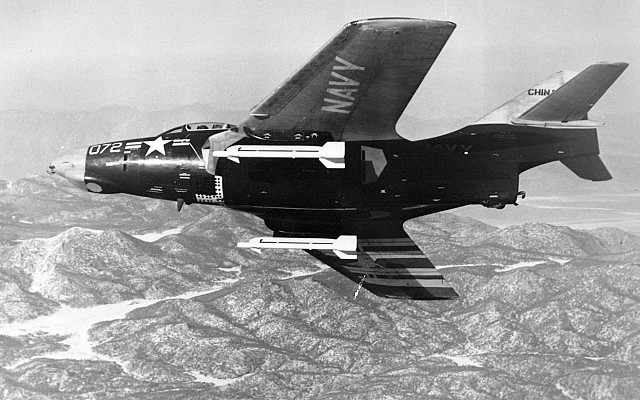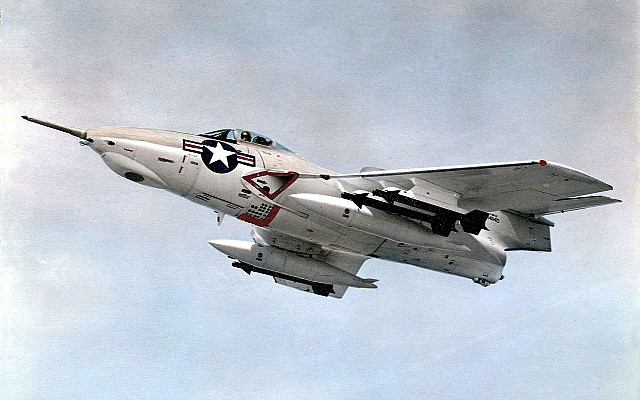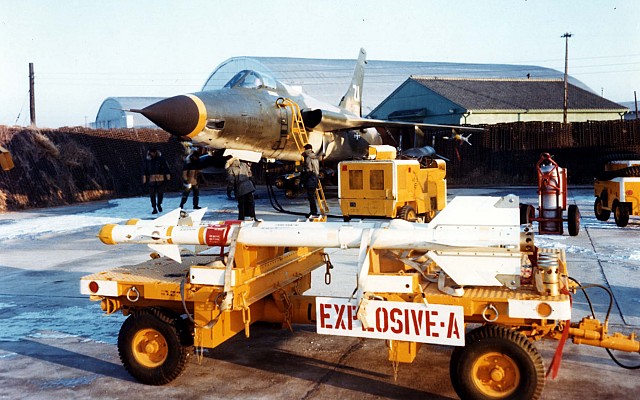AIM-9B Sidewinder
First generation Sidewinder missile
Overview
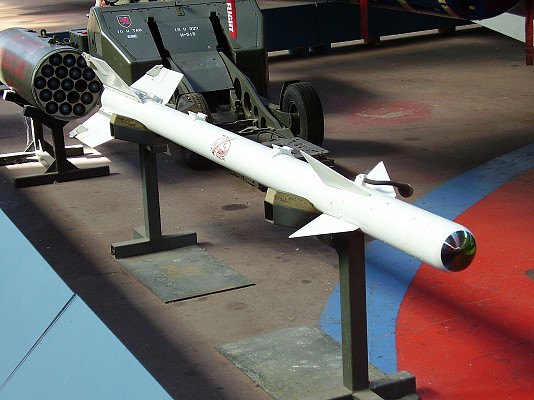
AIM-9B Sidewinder
AIM-9B Sidewinder missile on display at the Royal Military Museum Brussels.
Source: Marcelloo -
© CC BY-SA 3.0
1969 (AIM-9F)
United States - General Electric
Germany - Bodensee Gerätetechnik (AIM-9F)
Over 80.000 AIM-9B
15.000 AIM-9B/F in Germany
GAR-8 (AIM-9B)
AAM-N-7 Sidewinder I (AIM-9B)
AIM-9B FGW.2 (AIM-9F)
Rb 24B (Swedish service)
Description
Introduction
The AIM-9B Sidewinder is an early Cold War era short range air to air missile of American origin. The AIM-9B was the first operational missile in what would become a family of many generations of infrared guided missile used and developed till present day. Originally it was known as the AAM-N-7 Sidewinder IA in US Navy service and GAR-8 in US Air Force service until renamed AIM-9B in 1963.
Design
The AIM-9B has a classic layout with the passive infrared homing sensor in the nose, followed by the guidance and warhead sections and the rear half is made up of the rocket motor. There are four swept wings at the front and larger clipped wings at the rear. This early model Sidewinder had limited maneuverability and the seeker required the pilot to position the launch aircraft within strict parameters for a successful launch.
Guidance
The AIM-9B uses a passive infrared homing seeker. This early model seeker was uncooled and could only lock on to the exhaust of a jet aircraft, making it a rear aspect only missile. Ground clutter and the sun also interfered with the seeker, and flares could easily fool the seeker. The limited tracking rate could not keep up with sharp evasive maneuvers of target aircraft. Despite all this the AIM-9B was used successfully against various Soviet produced aircraft during the Vietnam war.
Firepower
The blast-fragmentation warhead has a 4.5 kg explosive charge and lethal radius of several meters. A passive infrared proximity fuse detonates the warhead. Early model Sidewinders did sometimes fly into the tailpipe of the target aircraft, severing the rear fuselage upon detonation. In other occasions the warhead did not detonate. One missile was recovered and sent to the Soviet Union for testing and reverse engineering after getting stuck in the fuselage of a Chinese MiG-17 during the Second Taiwan Strait Crisis in 1958.
Platforms
The relatively small size of the AIM-9B and placing no requirements on the aircraft's radar set made the AIM-9B easy to integrate into many existing and new fighter aircraft. First operational use was on US Navy FJ-3M Fury and F9F-8 Cougar. Several export models of the F-86 Sabre included the ability to launch the AIM-9B. The most notable platforms during the Vietnam were the F-8 Crusader and F-4 Phantom II. These were armed with the AIM-9B and the US Navy and US Air Force specific successors such as AIM-9D and E.
Users
The main user of the AIM-9B was the US military. It was developed by the US Navy, but also adopted by the US Air Force. Both used it actively during the Vietnam war. The AIM-9B was also exported in quantity to US allies in Europe and around the world. Tens of thousands of these missiles were produced, including license production of the baseline and improved AIM-9B in Germany. The AIM-9B was developed in many other variants, which often relegated the AIM-9B to reserve use.
Variants
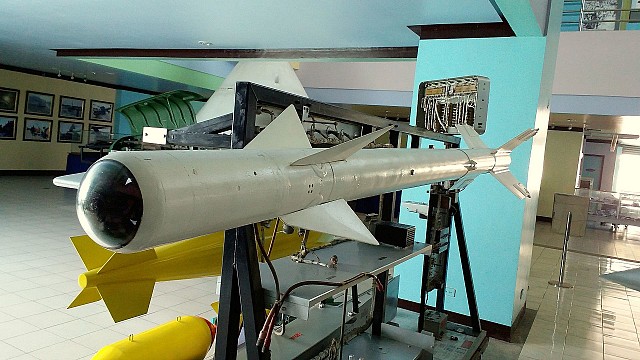
AIM-9B Sidewinder
AIM-9B Sidewinder air to air missile on display at the Phillippine Air Force Aerospace Museum.
Source: RoyKabanlit -
© CC BY-SA 4.0
List of AIM-9B variants
Details
Media
Related articles
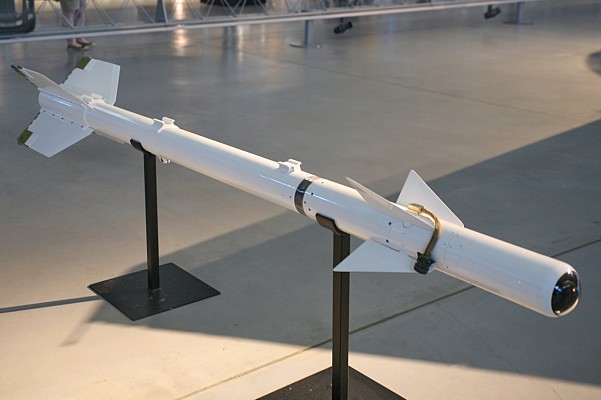
Vympel R-3
The Soviet K-13 / R-3S (NATO: AA-2 Atoll) is a near direct copy of the AIM-9B. Many parts are even interchangeable. This missile was produced in large numbers and exported to many states aligned with the Soviet Union.
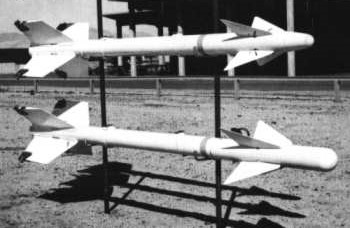
AIM-9C Sidewinder
The AIM-9C is the only missile in the Sidewinder family to feature semi-active radar homing.
